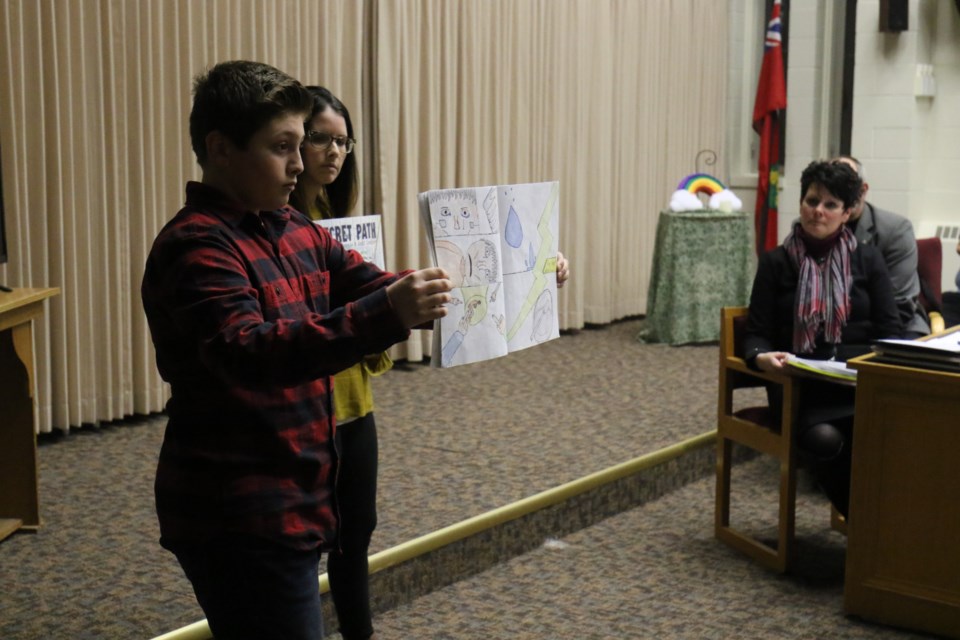A graphic novel about the residential school experience by 14-year-old Ronan Provenzano of St. Mary’s French Immersion Catholic School made an impression on trustees during the Huron-Superior Catholic District School Board (HSCDSB) meeting on Wednesday night.
The work - entitled Edmund - told the story of Edmund Metatawabin, who survived abuse during his time at St. Anne’s residential school in Fort Albany, Ont.
After showing panels of illustrations of Metatawabin in residential school to the trustees in attendance, Provenzano read the first of three poems contained in his graphic novel:
You’re coming with us, it’s for your own good.
I’m not coming.
You’re coming with us, your parents will go to jail.
I’m not coming.
You’re coming with us, you will be punished.
I’m not coming.
You’re coming with us, your family will die.
I’ll come.
“It meant a lot, because when he went to a residential school he was around my age, and it made me sad, because I don’t know if could of done what he did and survived,” said Provenzano.
The idea for the St. Mary’s graphic novel project about residential schools was the brainchild of teacher Anick Champagne, who was inspired by The Secret Path, a graphic novel about Chanie Wenjack and the Anishinaabe boy’s fatal experience running away from the St. Anne’s residential school in 1966.
The book, written by Gord Downie and illustrated by Jeff Lemire, served as the catalyst for the St. Mary’s school project. Champagne went out and bought a copy of The Secret Path to share with her class.
“Once we ended the graphic novel, I asked my students to do a research on somebody who went to residential school, and from there to create their own graphic novel,” said Champagne.
The students were given four weeks of in-class time to research as part of a Chromebook pilot project, before being given the task of telling the story of a residential school survivor using the combination of research, poems, and the drawing of panels. In the end, her class of 24 students each produced a 15-page graphic novel.
Mona Jones, Indigenous Education Lead for HSCDSB, took the Indigenous Education Advisory Committee (IEAC) to see the work of the class.
“We did have two people where their parents went to residential school, so we had some tears in the classroom,” Jones said during Provenzano’s presentation at the board meeting. “I don’t know how much more to emphasize the impact that these kids’ work had on some of the people that visited there.”
Champagne said that she had been trying to get the residential school graphic novel project at St. Mary’s presented to the trustees for awhile now, and thought it was important for them to see how powerful the work of students could be.
There’s even been some discussion about compiling all of the graphic novels into one book.
“It really pulled out the best work of all the students and I think the reason why that came to be is because they pride in their work.”
